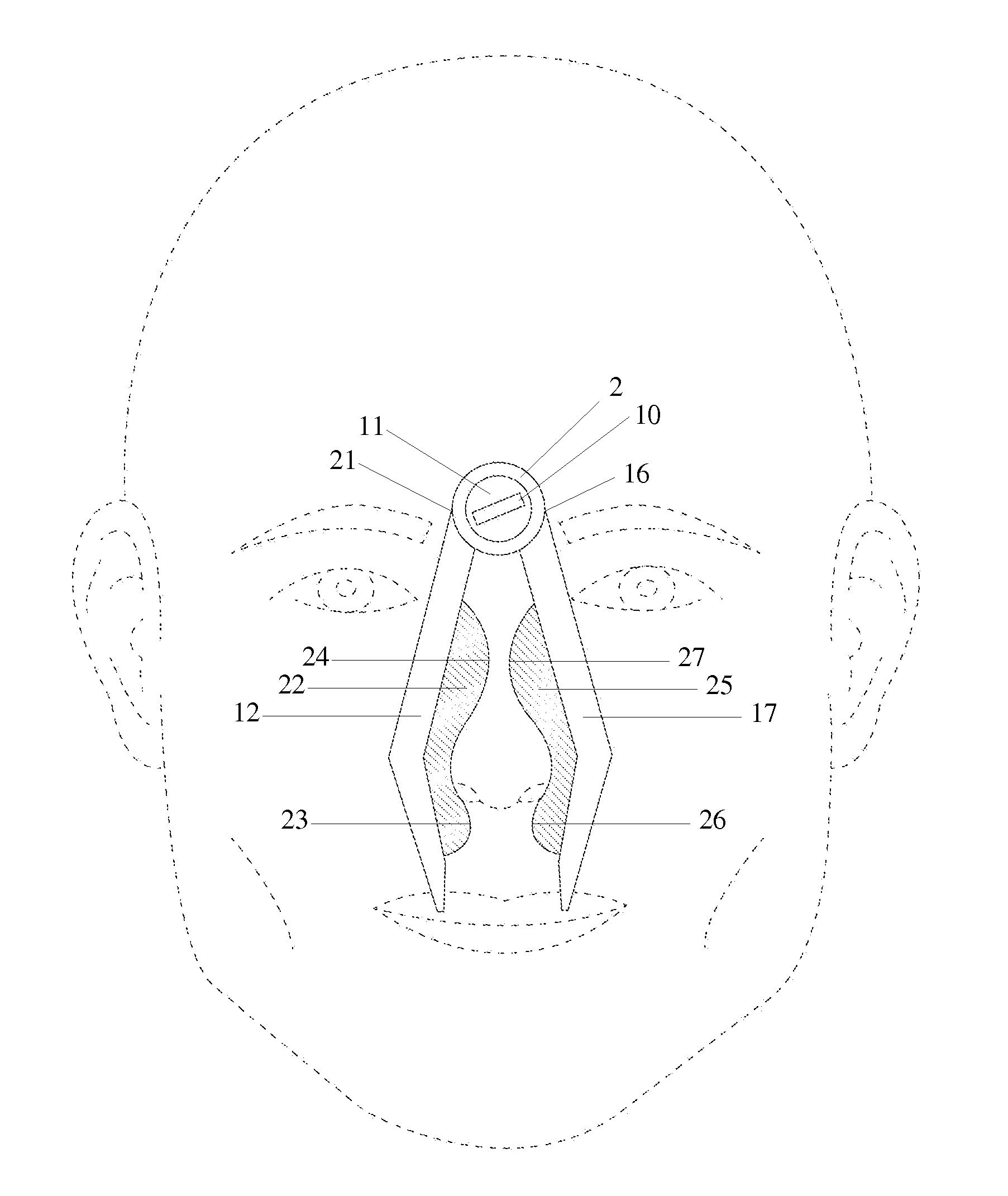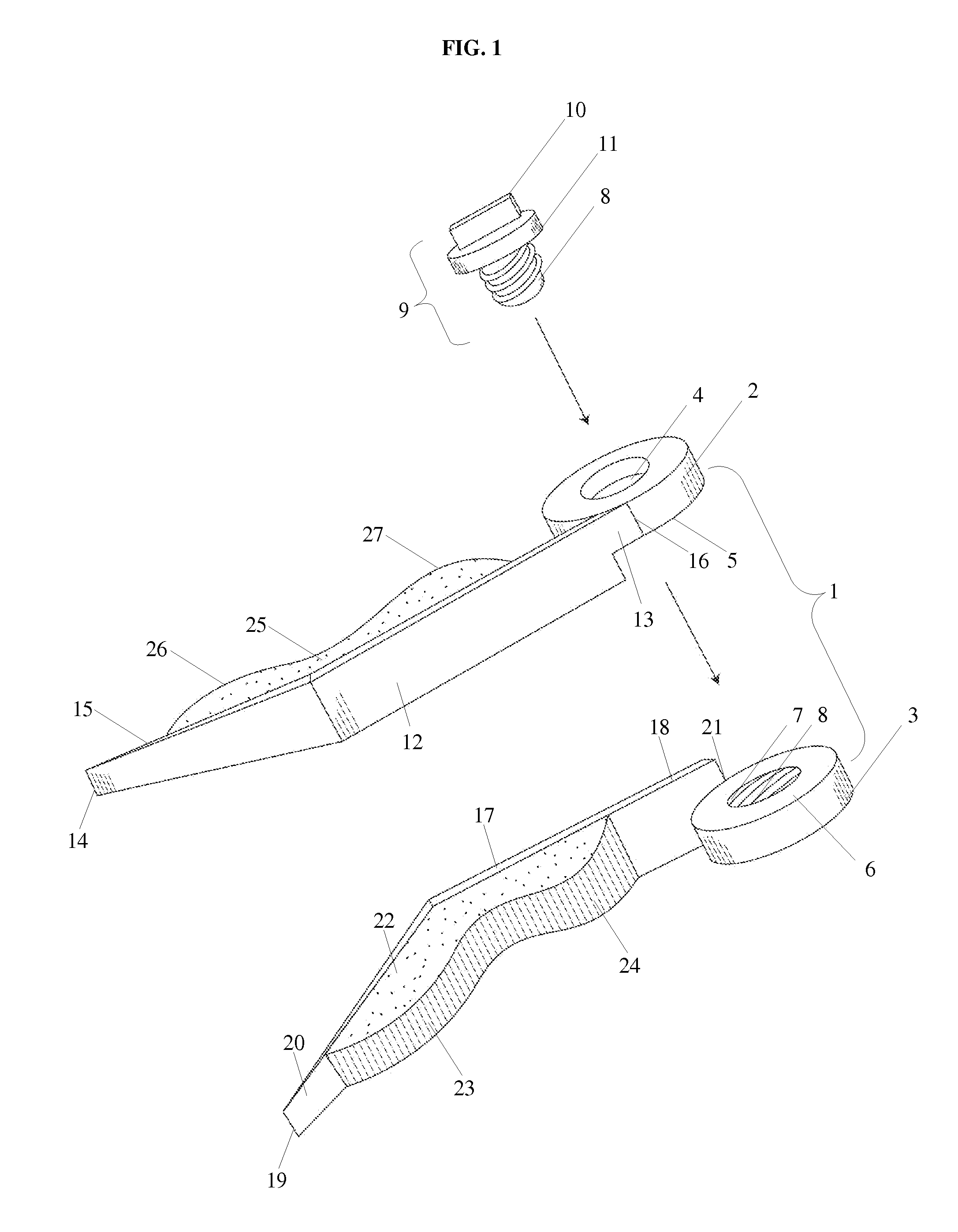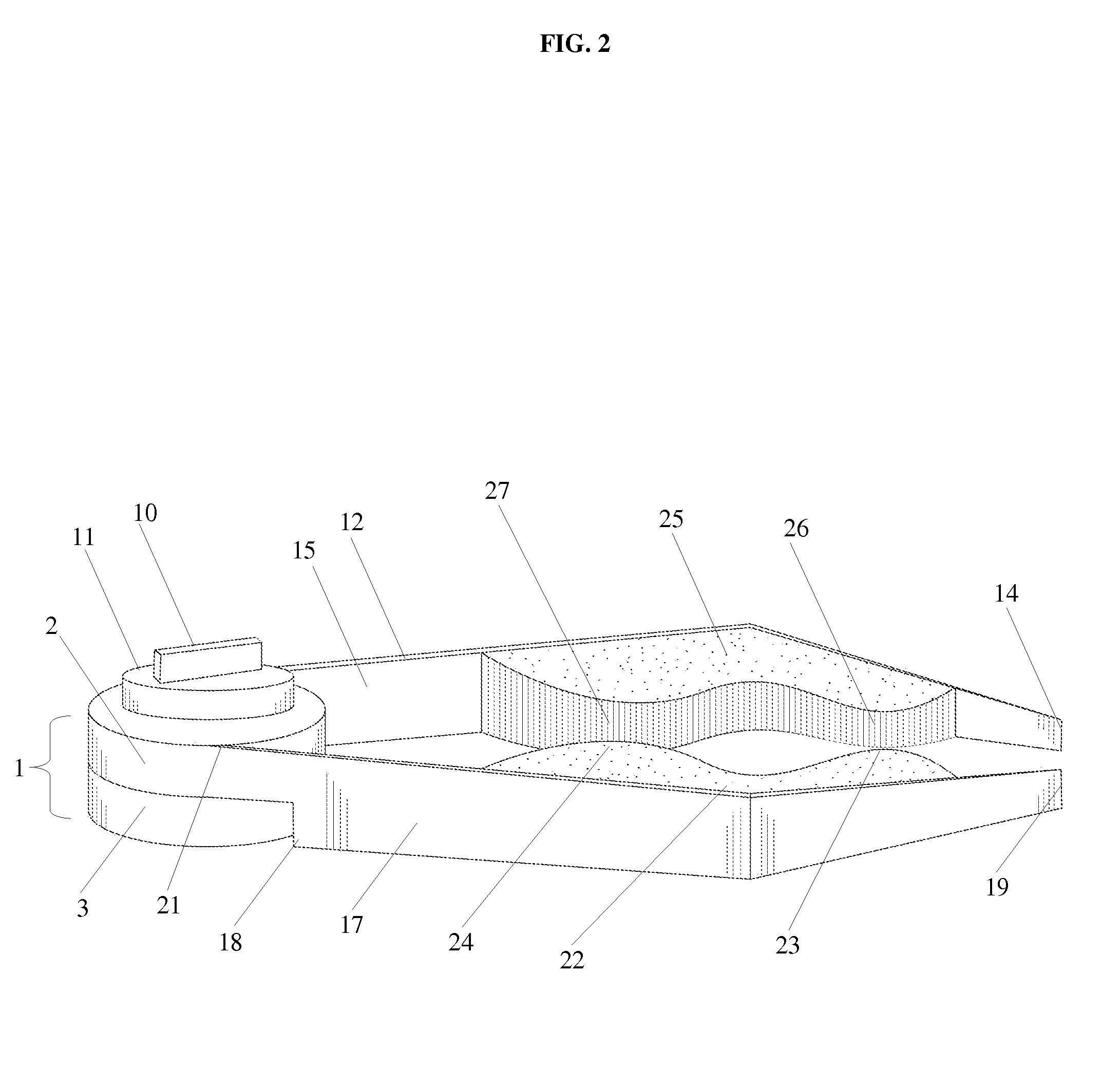Adjustable locking forceps device for the treatment of anterior epistaxis and method of use
a technology of locking forceps and anterior epistaxis, which is applied in the field of medical devices, can solve the problems of inconvenient and uncomfortable methods for patients or medical personnel to hold consistent pressure over the nostrils, prohibitive cost of retaining a caregiver for this purpose, and inability to work in a busy triage environment, etc., and achieves the effect of increasing the angular distance and being convenient to us
- Summary
- Abstract
- Description
- Claims
- Application Information
AI Technical Summary
Benefits of technology
Problems solved by technology
Method used
Image
Examples
Embodiment Construction
[0023]As described above, the present invention provides a new and useful adjustable locking forceps device for the treatment of anterior epistaxis which is easy to use, adjustable, comfortable for the patient, applies direct and constant pressure to the anatomy, lightweight, compresses both nares simultaneously, compresses the alae and nasal bone, hands free when during treatment, and is anatomically universal. This device is believed to be useful in hospitals and clinics wherein quick treatment of epistaxis is required, as well as in the field for use by the lay public and should be included in every first aid kit. The following description and accompanying drawings disclose at least one version of such a device.
[0024]Referring now to the invention in more detail, in FIG. 1 to FIG. 5 there is shown an adjustable locking forceps device for the treatment of anterior epistaxis which comprises a barrel hinge bearing assembly 1 which is generally cylindrical and has an anterior barrel ...
PUM
 Login to View More
Login to View More Abstract
Description
Claims
Application Information
 Login to View More
Login to View More - R&D
- Intellectual Property
- Life Sciences
- Materials
- Tech Scout
- Unparalleled Data Quality
- Higher Quality Content
- 60% Fewer Hallucinations
Browse by: Latest US Patents, China's latest patents, Technical Efficacy Thesaurus, Application Domain, Technology Topic, Popular Technical Reports.
© 2025 PatSnap. All rights reserved.Legal|Privacy policy|Modern Slavery Act Transparency Statement|Sitemap|About US| Contact US: help@patsnap.com



